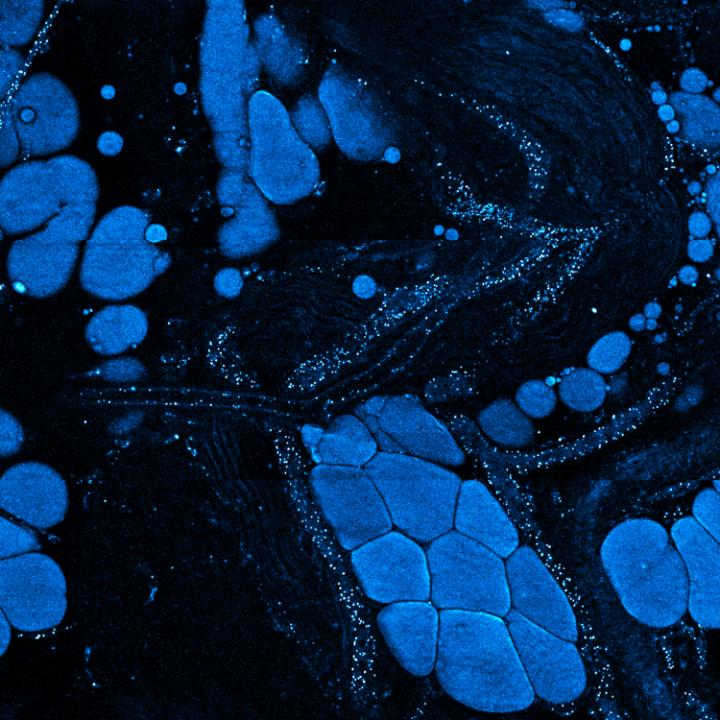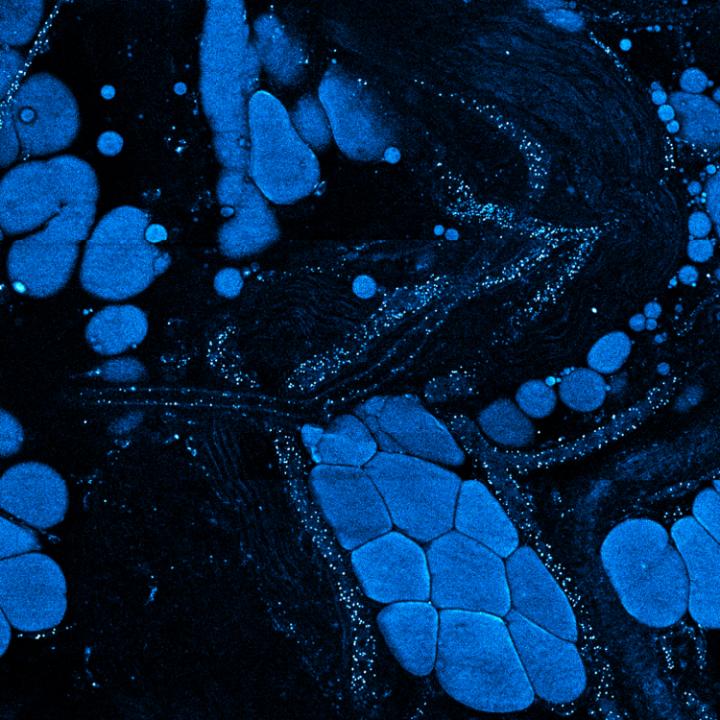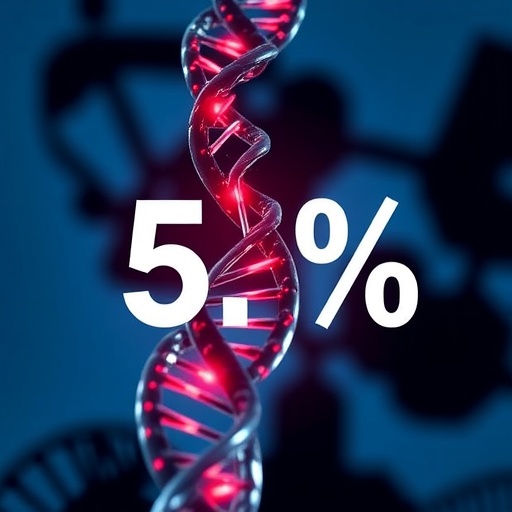
Credit: Image courtesy of Stephen Boppart and Haohua Tu
CHAMPAIGN, Ill. — Microscopic shifts in metabolism and increases in tiny transport vesicles out of tumor cells preface larger changes to the tumor environment and could prepare the way for cancerous cells to spread and metastasize, University of Illinois researchers report. They saw cancer-causing biological events at both the molecular and tissue scales as they happened, imaging the cells with precise wavelengths of light — no chemicals, dyes or genetic manipulation needed.
Performed with rat and human cancer tissue, the study looked at five changes seen in a tumor's environment as it develops, grows and spreads. There are techniques to study each of these separately, but all involve disturbing the cellular environment with chemical dyes, fluorescent probes or genetic manipulation, for example. The Illinois group used finely tuned wavelengths of light to see the structural and molecular makeup of tissue in its natural state. The researchers isolate the signals from specific cancer processes by focusing on distinct wavelengths and combine the images to see how the processes interact.
"We're starting to connect the dots here. This is the first time all of these pieces have been looked at together. No one's been able to visualize the tissue this way and see the changes dynamically," said Dr. Stephen Boppart, the leader of the study, published in the journal Science Advances. Boppart is an Illinois professor of electrical and computer engineering and of bioengineering, and also is a medical doctor.
The researchers were particularly interested in vesicles, the tiny packages that cells use to transport things in and out of the cell. Cancer cells pump out vesicles at an increased rate. Many cancer researchers believe this to be a response to the stress from molecular changes in the tissue.
Because the Illinois imaging technique doesn't disturb the cells and thus can watch them over time, the researchers saw that a wave of vesicles came before the larger tissue-scale changes like new blood vessels or recruitment of neighboring cells. Together with changes in metabolism, increased vesicle production could be a cause of the larger-scale changes in cancer tissue rather than an effect, the researchers say.
"This paper is important because it connects the microscopic scale – the molecular and vesicle scale — with the larger-scale events in the tissue," said Haohua Tu, a research scientist at the Beckman Institute for Advanced Science and Technology at Illinois and the first author of the paper. "Also, this is the first time we've compared changes in metabolism and vesicle production, and we found that they are linked. Both are microscopic events, but their concurrence leads to a lot of large-scale changes associated with tumor progression. The conclusion is that the combination of these two signals early cancer development and should be a focus of cancer therapy, rather than only focusing on larger-scale events later."
The study also provides evidence that vesicles from cancer cells may play a role in spreading the cancer to other tissues in addition to changing a tumor's local environment, the researchers said.
"Often, when there is a tumor in one tissue, cells elsewhere have undergone changes because of that tumor," Boppart said. "Are all these changes happening because there was some sort of environmental carcinogen that caused tumors at different points? Or did the tumor give off vesicles that changed the microenvironment to prepare it for those later cells that metastasize?"
Boppart hopes that the findings on vesicles and the role they play in signaling cancer progression will open new avenues of exploration for cancer detection, progression and treatment. The researchers have developed a portable version of the imaging device for use in operating rooms and biopsy suites, and are now testing whether it can identify increased vesicle production in cancer patients and assess how aggressive a tumor is. They also are conducting further studies into the vesicles to see what they contain.
"We also know from other studies that these vesicles carry a lot of information about where they came from and where they're going," Boppart said. "Imaging is great, but you have to know where to look. There's no way we can look at the whole body on the cellular level. But if we can take a drop of blood, scan it for cancer-related vesicles and know where they came from, then we know where to look for the tumor."
###
The National Institutes of Health supported this work.
Editor's notes: To contact Stephen Boppart, call 217 333-8598-; email: [email protected].
The paper "Concurrence of extracellular vesicle enrichment and metabolic switch visualized label-free in the tumor microenvironment" is available online.
Media Contact
Liz Ahlberg Touchstone
[email protected]
217-244-1073
@NewsAtIllinois
http://www.illinois.edu
############
Story Source: Materials provided by Scienmag





